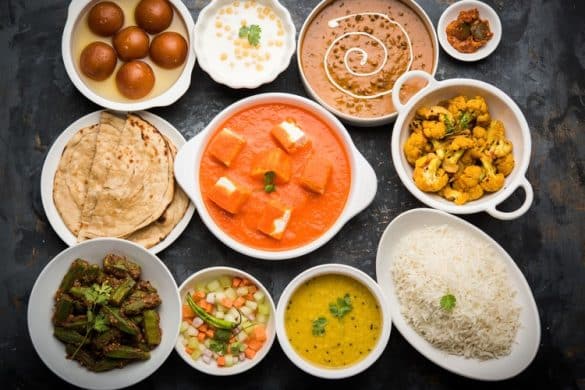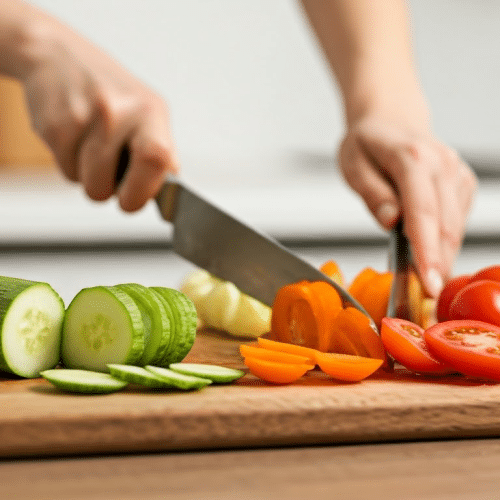The ancient Chinese cooking proverb says, “soy sauce adds flavor to food as salt does to ocean waves.” Indeed, soy sauce has been a critical ingredient in dishes for centuries. Its umami flavor and salty notes have made it an indispensable part of Asian cuisine. But what if we told you there are even more secrets within this classic condiment? Its potential extends beyond being poured over fried rice or used as a dipping sauce. Unlocking its full flavor can open up new possibilities in your cooking. Well, allow us to be your guide as we unlock the mysteries of ‘Soy Sauce Secrets: Unlocking the Flavor Potential in Your Cooking.’
From subtle nuances between varieties to creative uses outside traditional recipes, our comprehensive article will take you through all aspects of soy sauce. We’ll explore how different types are produced and their unique contributions when incorporated into various culinary creations. Plus, learn tips from top chefs about maximizing taste while minimizing sodium content! Finally, get inspired with some never-thought-of ways to use this versatile seasoning – trust us, you won’t want to miss out!
So come along and join us as we dive deep into the depths of soy sauce knowledge! Discover why this age-old staple continues to captivate cooks worldwide – make sure you bring your appetite for deliciousness!
Definition
So, what is soy sauce? Soy sauce is an old condiment from fermented soybeans, wheat, salt, and water. It can range in color from dark brown to black and has a salty flavor profile with subtle sweet notes. Its origins date back centuries ago when the Chinese began fermenting soybeans to preserve them for long-term storage. Today, it’s used worldwide to enhance the flavors of dishes and add an umami taste – that fifth basic taste made up of savory components found in foods like mushrooms or Parmesan cheese. Used frequently in Asian cuisines such as Japanese, Korean, and Thai food, its versatility makes it one of the most popular sauces globally! With such a rich history and complex flavor profiles, let’s explore how this beloved condiment came to be.
History Of Soy Sauce
It’s an age-old culinary secret: soy sauce has been a staple in many Asian cultures for centuries. Let’s journey back in time to understand the remarkable history of this timeless condiment.
Beginning with its origin it is believed that soy sauce was first invented during the Qin dynasty (221 – 206 BC) by Chinese scholars who experimented with ancient fermentation processes. It quickly gained popularity and spread throughout various parts of Asia, eventually becoming one of the most popular condiments used across all cultures today.
Soy sauce became essential in traditional recipes from China, Japan, Korea, and other Asian countries. These recipes are still widely enjoyed and continue to be improved upon through modern technologies such as fermentation tanks and ultra-filtration machines, which help create different types of flavors.
Here are some interesting facts about soy sauce:
- It comprises water, wheat flour or roasted grain powder, salt, flavor enhancement enzymes, and fermentation bacteria.
- Soy sauces vary in color depending on type; light-colored versions tend to be milder, while dark ones are more intense in taste.
- The production method can also affect how salty or sweet a particular brand may be compared to others.
With so much complexity behind its creation, there’s no wonder why soy sauce remains one of the world’s favorite condiments! Moving forward, we’ll explore further the different types of soy sauces available today and their unique flavor profiles.
Types Of Soy Sauces
Soy sauce is an essential condiment in many Asian cuisines. It comes in various types, each with its distinctive flavor and use. Let’s take a look at some of the most popular soy sauces available today:
| Type | Description |
| Light Soy Sauce | This has a lighter color than dark soy sauce and is saltier, making it ideal for marinating, dipping, or adding to cooked dishes towards the end of cooking. |
| Dark Soy Sauce | A bit thicker and sweeter than light soy sauce, this adds depth to stir-fries and braised dishes. The molasses content gives it a richer taste and darker color and imparts aroma during cooking. |
| Tamari Soy Sauce | Usually made without wheat, tamari is another Japanese soy sauce with a strong umami flavor. Perfect for enhancing soup stocks and stews. |
| Shoyu Soy Sauce | Made from fermented wheat, shoyu tastes more mellow than other varieties; perfect for steaming foods like fish or vegetables. It also makes excellent salad dressings! |
| Miso Paste | Not technically a ‘soy sauce’ but often used instead due to its milder flavor profile – miso paste can be added directly into soups or hotpots to create complex flavors quickly and easily. |
As you can see, several soy sauces bring something special to your dish – whether you’re looking for subtle sweetness or intense umami flavors! Choosing a suitable variety depends on what kind of dish you’re creating and how much complexity you want in the flavor profile. With these five options outlined above, you have everything needed to unlock new depths of flavor in your cooking!
Substitutes For Soy Sauce
The possibilities of alternative seasonings to soy sauce are endless. Tamari sauce, coconut aminos, fish sauce, miso paste, and hoisin sauce can be used as substitutes for soy sauce in many recipes. As with any ingredient swap, it is essential to understand their differences before substituting.
Tamari sauce is made from fermented soybeans and has a richer flavor than regular soy sauce. It contains less wheat, and gluten-free options are available. Coconut aminos provide an umami flavor profile similar to soy sauce but without the sodium content or aftertaste. Fish sauce may have a strong smell that some people don’t enjoy; however, when combined with other ingredients, the taste is much more subtle. Miso paste adds saltiness, funkiness, and complexity to dishes while still being mild enough not to overpower different flavors. Hoisin sauce provides sweetness and tangy notes due to its garlic, vinegar, and sugar mix.
Whether you choose one of these alternatives or decide to use all five together in your recipe, each will bring something unique to your dish – impressive depth and flavor profiles that keep everyone coming back for seconds! With such dynamic ways of using these substitutes instead of traditional soy sauces, there’s no telling what delicious possibilities await in your kitchen! Ready to explore different ingredient combinations with soy sauces? Let’s dive right in.
Ingredient Combinations With Soy Sauce
Soy sauce is a versatile ingredient with many hidden flavor potentials. It can be combined with other ingredients to unlock its full taste to create unique and delicious combinations. For example, miso paste adds creaminess and earthy flavors, while garlic gives the soy sauce a kick of spiciness. A variety of honey and ginger creates a sweet yet zesty blend that pairs perfectly with soy sauce. And for those looking for some heat in their dish, chili peppers mixed with soy sauce bring out a fantastic spicy-savory fusion.
These various mixtures can be used as marinades or sauces to dress up any meal. With each combination providing something special to your plate, you’ll find yourself experimenting more and more to discover even more flavor possibilities! Now let’s look at how these incredible ingredient combinations can be used in cooking.
How To Use In Cooking
Now that we have explored the various ingredient combinations with soy sauce let’s delve into how to use it in cooking. Soy sauce is incredibly versatile and can be used in multiple ways. Stir-frying with soy sauce gives food an extra depth of flavor as its saltiness moves through the dish. Similarly, glazing foods such as tofu or vegetables with a mixture of sugar, garlic, and soy sauce add a touch of sweetness and umami to enhance your meal.
Soy sauce also works excellent for marinating meats. Combining ingredients like ginger, garlic, chili paste, honey, and other seasonings creates a savory blend that helps tenderize the meat while adding flavor. Dressings are another way to incorporate soy sauce into your kitchen creations; mix sesame oil, vinegar, lime juice, and soy sauce to create a flavorful vinaigrette dressing perfect for salads or veggies. Finally, using it as part of basmati rice recipes will give your dish subtle hints of salty goodness – add some butter, black pepper powder, and cumin seeds, then finish with some light soya sauce!
Marinating meat with soy sauce is one effective way to ensure complex flavors get right into the protein – infusing it with deliciousness before you even hit the stovetop.
Marinating Meat With Soy Sauce
Marinating meat with soy sauce is an easy way to enhance its flavor. When done correctly, the marinade can infuse the meat with a savory depth you wouldn’t get. To do this:
- Combine equal parts of soy sauce and water in a shallow dish or bowl large enough to fit your piece of meat.
- Add one tablespoon of freshly minced ginger, two cloves of garlic (minced), two tablespoons of olive oil, and one teaspoon of sugar for each pound of meat.
- Mix these ingredients until they form a thin paste, then submerge your cut of beef into it for at least 30 minutes before cooking.
Once marinated, transfer the meat onto a hot grill or skillet. The high heat will cause the marinade to caramelize on contact, giving your steak an appealing golden-brown look and fantastic flavor. Be sure to cook your steak sparingly to avoid drying out all those delicious juices!
Now you’re ready to enjoy some succulent steaks full of umami goodness. With just a few simple steps and ingredients, you’ve unlocked the potential in your cooking by adding complex layers of flavor with soy sauce. And when it comes time to stir fry vegetables later? You’ll be even better prepared!
Stir-Frying Vegetables With Soy Sauce
Could it be true that soy sauce is the secret to creating flavorful stir-fries? As any cook knows, stirring vegetables in a hot pan can yield delicious results. But adding soy sauce to this cooking method may further elevate its flavor potential.
Here are five tips for spicing up your stir-fry with soy sauce:
- Always add the right amount of soy sauce – too much will make your dish overly salty, while not enough won’t provide enough flavor.
- Choose light or dark varieties depending on the desired taste and color; light generally has a milder flavor, while dark has a richer one.
- Add near the end of cooking so as not to burn off all the umami flavors from the soy sauce.
- Balance out other ingredients, such as sesame oil, garlic, and ginger, for an extra kick of flavor.
- Consider using low-sodium versions to reduce salt intake without sacrificing flavor.
Using these tips and tricks when stir-frying vegetables with soy sauce will help ensure every meal turns out savory and satisfying. Now let’s apply those same principles to flavoring soup and salad dressings!
Flavoring Soup And Salad Dressings With Soy Sauce
Adding soy sauce to soup and salad dressings is an easy way to enhance flavor. Soy sauce has a unique umami taste that adds complexity to any dish, making it the perfect ingredient for soups and salads.
| Soup | Salad Dressings |
| Add 1 tsp of soy sauce per cup of broth | Marinade vegetables in 2 tbsp of soy sauce mixed with herbs & spices |
| Mix ¼ cup of soy sauce with ginger & garlic powder for added flavor | Drizzle ½ tsp of soy sauce over greens for extra zest |
| Stir fry mushrooms in 1 tbsp of light or dark soy sauce before adding them to the soup. | Sprinkle sesame seeds on top after tossing the dressing with lettuce leaves. |
The depth of flavor that comes from adding just a few drops of this condiment will take your dishes up a notch. And there’s no need to worry about overpowering your food either; when used correctly, even small amounts can brighten up bland ingredients.
By understanding how different types and styles of soy sauces can be utilized, you can craft new flavors into your favorite recipes while unlocking their hidden potential. With these tips, you’re well on your way toward creating exceptional dishes. Ready to take it one step further? Let’s explore ways we can enhance the flavor of rice dishes next!
Enhancing the Flavor Of Rice Dishes
Enhancing the flavor of rice dishes is an essential part of cooking with soy sauce. Asian cuisine relies heavily on umami flavors. A well-balanced dish can be created by incorporating different sauces or soy sauce marinades. Many recipes are available to help you add more depth and complexity to your favorite rice dishes. For example, adding a few drops of dark soy sauce to steamed white rice can make it richer in color and taste.
Experimenting with light or dark soy sauce recipes will help you find the perfect balance for each dish. Adding other ingredients, such as garlic, ginger, sesame oil, and spring onions, helps enhance the flavor even further. Consider mixing several soy sauces for added complexity – try combining sweetened and regular versions for an exciting result!
Using soy sauce in combination with other seasonings can create unique new flavors for all kinds of food – from fried rice to sushi rolls. With so much potential, there’s no limit to creating delicious meals using this versatile condiment. So don’t hesitate to experiment today – you might discover something remarkable! Next up: Creating a sweet glaze with soy sauce.
Creating A Sweet Glaze With Soy Sauce
Soy sauce is a versatile condiment that can enhance the flavor of many dishes. It adds an umami punch and helps create a deliciously sweet glaze when paired with sugar and other ingredients. Several recipes for making simple yet flavorful soy sauce glazes can be used on meat, vegetables, and even desserts.
One popular recipe involves combining equal parts soy sauce and brown sugar into a saucepan over medium heat until the mixture simmers and thickens. Then add garlic powder, onion powder, ground ginger, black pepper, and red pepper flakes for added flavor. Once it has reached your desired consistency, use this glaze as a marinade or brush it onto cooked meats before serving. This classic glaze pairs well with roasted pork chops, steaks, salmon fillets, and more!
For those looking for something sweeter, there’s another version of the soy sauce glaze, which uses honey instead of sugar and some garlic cloves. Combine one cup of soy sauce with half a cup of honey in a small pot over low-medium heat; occasionally stir until everything dissolves, then add two minced garlic cloves towards the end. Simmer the mixture until it thickens up nicely – about 10 minutes – frequently stirring so it doesn’t burn. Brush this sticky sweet glaze onto grilled chicken wings or ribs for an extra hint of sweetness that will have everyone coming back for seconds!
With these easy recipes at your fingertips, you’ll now take advantage of all the fantastic flavor potential of soy sauce. Next up: pairing sauces for maximum flavor!
Pairing Sauces For Maximum Flavour
Soy sauce can be used to create a variety of flavourful dishes. To maximize the potential of soy sauces, it’s essential to know how to pair them correctly. There are several great ways to use soy sauce and other ingredients and sauces.
When paired correctly, these mixtures can enhance the taste of any word. For example, adding a small amount of light or dark soy sauce to glazes for grilled meats adds an extra layer of umami flavor without overpowering. Similarly, incorporating a tablespoon or two into marinades and soups will add richness and complexity that is hard to replicate with other ingredients alone.
With just a few simple recipes featuring soy sauce, you’ll quickly be able to elevate your cooking game and make more delicious meals than ever! You’ll soon feel comfortable creating flavorful recipes by learning some basic guidelines for making your sauces at home.
Guidelines For Making Your Soy Sauce
Cooking with soy sauce is like adding a secret ingredient to your dishes. Unlock its flavor potential and make your homemade version! Here’s how:
- Gather the ingredients: soybeans, wheat, salt, water
- Follow a recipe or create one of your own; adjust measurements according to taste
- Start by boiling the soybeans in salted water until they are soft enough to mash easily
- Next, mix equal parts of mashed soybean and wheat flour paste in a pot with two cups of cold water
- Heat on low-medium heat for an hour while stirring continuously with a wooden spoon
- Finally, strain the liquid into a jar or container and let it cool before using it as you would any other store-bought variety
Making soy sauce can be rewarding and fun — not to mention delicious! With patience, care, and attention to detail, you’ll soon have your unique condiment that will add depth and flavor to all recipes. Now let’s look at the health benefits of eating soy sauce.
Health Benefits Of Eating Soy Sauce
Soy sauce has many nutritional benefits, making it a great addition to your diet. It is low in calories, fat, and cholesterol yet rich in antioxidants. The main ingredient of soy sauce is fermented soybeans which contain essential vitamins and minerals like iron, zinc, and B-complex vitamins. Additionally, the fermentation process adds beneficial probiotics to the mix.
Eating soy sauce has numerous health benefits; research suggests it can help reduce inflammation and improve heart health by lowering blood pressure levels. Soy sauce also contains polyphenols associated with decreased risk of certain cancers. Furthermore, studies suggest that regular consumption may protect against age-related cognitive decline due to its high antioxidant content!
Despite these potential health benefits, some risks are associated with consuming too much soy sauce, such as salt sensitivity or elevated sodium levels if consumed in large amounts. So consider any dietary restrictions before adding more soy sauce to your meals.
Given all this information, it’s easy to see why incorporating soy sauce into your cooking can provide various health benefits for your body and mind. Let’s learn about tips for storing and serving this versatile condiment!
Tips For Storing And Serving
Now that we’ve explored the health benefits of consuming soy sauce let us dive into how to store and serve it. You can maximize your cooking with this versatile condiment by following simple tips. Storing and serving soy sauce correctly is essential for unlocking its full flavor potential!
| Storage Tips | Serving Tips |
| Store in a cool, dry place | Drizzle over salads or soups before eating |
| Shake well before use | Add at the end of cooking for extra umami flavor |
| Refrigerate after opening for freshness & longevity | Use as marinade for meats/seafood overnight for maximum taste impact |
Proper soy sauce storage is the key to maximizing shelf life and maintaining optimal flavor levels. It would help to store it permanently in a cool, dry place away from direct sunlight and heat sources. Once opened, shake the bottle before using it each time, as the salt content may settle during periods without use. Additionally, refrigeration after opening will help preserve freshness for extended periods.
When serving soy sauce, numerous options are available depending on personal preference and desired effect on food. For example, adding soy sauce while cooking gives dishes an extra boost of savory flavors; however, adding too early could result in a salty dish if not monitored closely. Alternatively, counting toward the end of cooking also provides excellent depth but less risk of being overly salty due to evaporation effects from higher temperatures used earlier in preparation stages. Furthermore, some people prefer drizzling raw sauces such as soy onto finished meals like salads or soups just before consumption – this helps keep all ingredients separate yet still allows them to combine upon tasting together. Lastly, many cooks use their favorite brand of soy sauce when marinating meats and seafood overnight – this ensures deep penetration, resulting in more intense flavor profiles throughout foods once cooked properly afterward!
Ultimately choosing correct storage methods coupled with judicious usage techniques allows users to unlock fuller flavors within various recipes incorporating this traditional Asian ingredient. Soy Sauce adds versatility and robust tastes across multiple cuisines, so experiment creatively today!
Frequently Asked Questions
Is It Safe To Consume Soy Sauce While Pregnant?
The question of whether it is safe to consume soy sauce while pregnant can be a daunting one for expecting mothers. After all, the health and safety of their child rest on making sure that they make the right choice when deciding what foods are okay to eat during this delicate time. Fortunately, many studies have found that consuming soy sauce in moderation poses no risk to an unborn baby.
When eaten occasionally, soy sauce will not harm a pregnant woman or her developing fetus. However, due to its high sodium content, it is best consumed only in moderation as part of a balanced diet. Overeating could lead to dehydration or increased blood pressure, which should be avoided during pregnancy. Additionally, some brands may contain MSG (monosodium glutamate), so it’s important to check labels carefully before purchasing to avoid this.
Overall, with just a few precautions considered, such as moderating consumption and reading ingredient lists thoroughly, enjoying occasional dishes seasoned with soy sauce while pregnant should not create any problems for the mother or baby. It’s simply about being mindful and following proper guidelines for good nutrition during this particular period of life.
Can I Use Soy Sauce As A Substitute For Salt?
Have you ever considered using soy sauce as a substitute for salt? It may sound surprising, but there are many ways to incorporate this popular condiment into your cooking beyond simply adding it to dishes at the table. From marinating and seasoning meats to replacing sodium in recipes, soy sauce can be an excellent way to add umami flavor without relying on salt.
Regarding marinating and seasoning meats, soy sauce is an excellent option for those looking for more than traditional seasonings or flavors. Whether using it as a replacement for salt or as part of an existing recipe, its salty-sweet taste adds depth and complexity that can take any dish from ordinary to extraordinary. Additionally, soy sauce has less sodium per serving than regular table salt, so it can provide a healthier alternative when used in moderation.
Soy sauce can also come in handy when trying to reduce the amount of sodium in recipes. For instance, if the dish calls for broth or stock with added salt, soy sauce can be used instead while providing some additional umami flavor. You’ll want to adjust other ingredients accordingly since soy sauce adds some sweetness, which could reduce the balance of flavors. But overall, substituting soy sauce for salt is a great way to experiment with new tastes and textures while keeping things healthy and flavorful!
With all these benefits in mind — whether you’re looking for something new to try with meat dishes or wanting to replace excess dietary sodium — incorporating soy sauce into your cooking repertoire is worth exploring further!
How Long Can Soy Sauce Be Stored For?
When it comes to storing soy sauce, one of the most commonly asked questions is how long it can be stored. This is an essential question since knowing the shelf life helps ensure your food remains safe and flavorful. To preserve its flavor and safety, here are some tips on storing soy sauce both short-term and long-term.
For those who use soy sauce often in their cooking, you’ll want to pay attention to the storage details when using it frequently. Short-term storage should involve a cool place away from direct sunlight or heat sources, such as inside a cupboard or pantry shelf with a tightly sealed lid after each use. Doing this will help keep bacteria out while preserving the taste of your favorite sauces.
Keep opened bottles in refrigeration if possible when looking at long-term storage options. If there’s no room in your fridge, store them in a dry area where temperature changes won’t affect the quality over time – think somewhere like a basement closet or cellar space. Additionally, remember to check expiration dates regularly so that you can rotate through older batches of soy sauce before they spoil.
By following these simple guidelines for storing soy sauce safely, you can rest assured that every meal will have optimal flavor and remain safe for consumption!
Does Soy Sauce Contain Gluten?
Many people are concerned about the potential presence of gluten in their food, particularly when it comes to soy sauce. But does soy sauce contain gluten? The good news is that most traditional varieties of soy sauce do not actually contain wheat or other forms of gluten and thus can be safely consumed by those with celiac disease and gluten intolerance. Here’s what you need to know:
- Soy sauce is typically made from fermented soybeans, salt, water, and roasted wheat grains.
- Wheat-based ingredients may be used during production. Still, these ingredients break down into separate molecules during fermentation, so no traces remain in the final product.
- Thus, regular soy sauce is generally considered safe for consumption by individuals with celiac disease or gluten sensitivity because it contains no detectable levels of gluten.
- Specialty brands such as tamari or shoyu might use different grains like chickpeas or brown rice instead of wheat. This makes them naturally gluten-free and ideal for anyone who avoids trace amounts of wheat.
- If you’re unsure whether your preferred brand is free from gluten contamination, look at the label carefully. If there’s a “gluten-free” certification symbol on it, you can rest assured that it’s safe for consumption!
It’s reassuring to know that, for all intents and purposes, most soy sauces should pose no risk to those with sensitivities toward gluten-containing foods. Nevertheless, double-checking labels and opting for specialty brands remains prudent advice!
Can I Use Soy Sauce To Marinate Seafood?
Soy sauce is a popular condiment in many cuisines and can be used for more than just flavoring food. But can you use it to marinate seafood? The answer is yes! Soy sauce can be an excellent tool for marinating fish, shrimp, crab, and other types of seafood. It not only adds flavor but also helps tenderize the meat.
However, pregnant women should take extra care when using soy sauce as it is high in sodium. For those looking for an alternative to regular table salt as a seasoning or substitute for soy sauce, there are gluten-free options available on the market that still provide great flavor.
When working with soy sauce in your cooking:
- Ensure all ingredients are washed adequately before adding them.
- Taste test often while cooking so you don’t over-season your dish.
- Incorporate additional flavors, such as herbs and spices, to balance out the salty taste of soy sauce if needed.
Using soy sauce to marinate seafood is a delicious way to add deep umami notes and enhance its natural flavors without overpowering them – plus, it’s easy too! With careful consideration of safety precautions and proper usage of this versatile ingredient, you can unlock even more potential from your culinary creations!
Conclusion
In conclusion, soy sauce is a versatile ingredient that can enhance the flavors of many dishes. It is essential to understand the safety precautions when using it while pregnant and its storage guidelines. With these simple tips, you’ll unlock all kinds of flavor potential in your cooking!
From sushi rolls to stir-fries, marinating meats, or adding depth of flavor to sauces – soy sauce brings out the best in everything it touches. Understanding how this ancient condiment works with different ingredients allows you to elevate your meals from everyday fare into something extraordinary. Plus, if you use quality products, you’re guaranteed results that will satisfy even the most discerning palates.
At its core, soy sauce is an incredibly flavorful addition to any kitchen arsenal. Whether used as a finishing touch for rice bowls or as part of a giant recipe – it adds layers and complexity that cannot be achieved without its unique umami profile. So go ahead: take a chance to unlock the hidden potential in your cooking with this timeless Asian staple!













